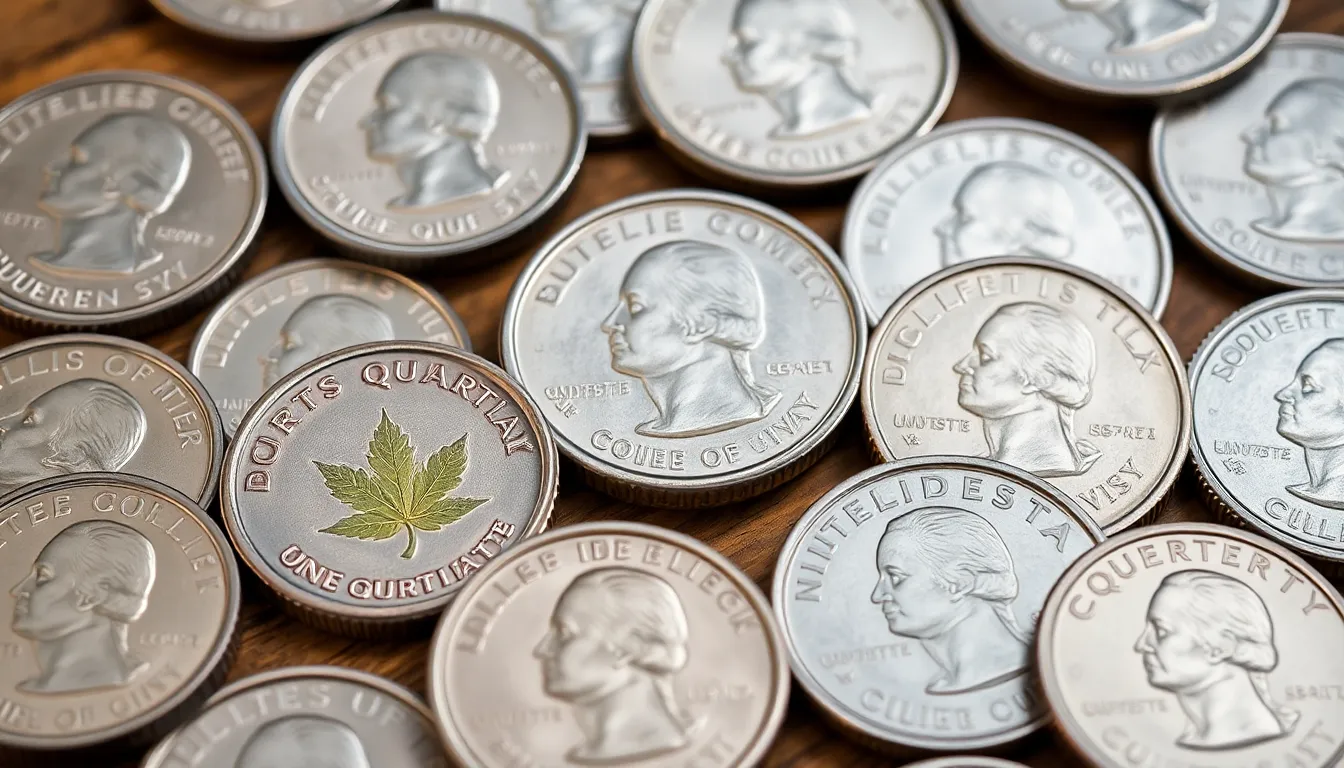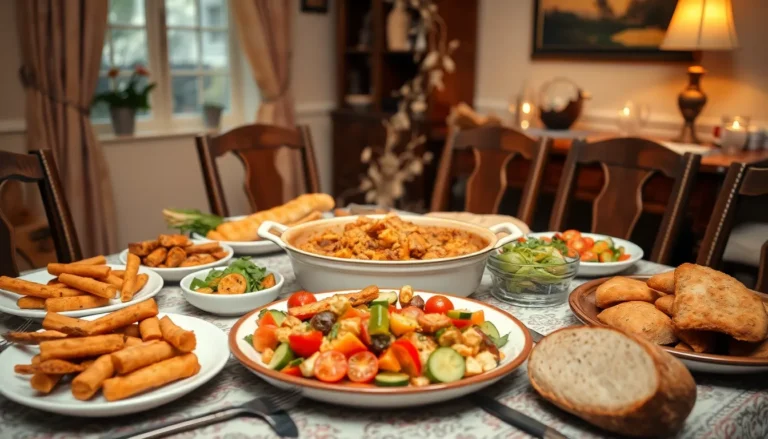Quarters might seem like just pocket change, but some modern ones could be worth more than a trip to the coffee shop. Picture this: you’re rummaging through your wallet, and instead of tossing that shiny quarter aside, you discover it’s a rare gem. Suddenly, that mundane coin turns into your ticket to a little extra cash.
Table of Contents
ToggleOverview Of Modern Quarters
Modern quarters include those minted from 1965 onward, primarily made of copper and nickel. Certain types, however, can hold significant value beyond their face value. Some quarters, such as the 1999-S proof quarter from the 50 State Quarters program, stand out among the collection. Others, like the 2004 Wisconsin quarter with a notable extra leaf variant, draw attention from collectors.
Diverse factors contribute to a quarter’s value. Condition plays a crucial role; uncirculated coins are worth more than those showing signs of wear. Rarity also increases desirability; limited mintages or specific errors enhance a coin’s attractiveness to collectors. Specific years, like 2009 with its high demand due to low mintage, may yield a higher return.
Market fluctuations affect the pricing of modern quarters. Prices change based on collector interest and the overall economy. Auctions, coin shows, or online marketplaces are common avenues for buying and selling quarters. Interested collectors should track trends and research specific coins to understand their potential worth.
Mint marks provide additional insights into a quarter’s value. Quarters from the San Francisco Mint (S) or West Point Mint (W) often have higher demand due to their limited production. Additionally, unique designs, like the America the Beautiful series, can accumulate value over time. Collectors gain an advantage by staying updated on current market trends and buying opportunities.
Modern quarters offer exciting possibilities for value appreciation. While many quarters remain just 25 cents, others may transform into valuable assets through careful searching and informed collecting.
Factors That Determine Value

Value depends significantly on several key factors that influence how much modern quarters can be worth. Rarity and condition are two critical aspects that collectors and investors evaluate closely.
Rarity
Rarity plays a vital role in determining a quarter’s value. Coins with limited mintages often command higher prices, especially among collectors. For instance, the 2009 quarter series had significantly lower production numbers compared to years preceding it, making these coins more sought after. Additionally, unique variants like the 2004 Wisconsin quarter with the extra leaf attract considerable attention due to their scarcity. Collectors often track mintage numbers to identify which quarters possess rarity, enhancing their potential value over time.
Condition
Condition directly impacts a quarter’s market value. Uncirculated quarters typically achieve higher prices than circulated ones, as their pristine state indicates minimal wear and damage. Graded coins, especially those rated by professional services, can fetch significantly more, as collectors value quality. Coin grading scales, like those from the American Numismatic Association, help assess a quarter’s condition based on factors like luster, scratch marks, and overall appearance. Quarters in exceptional condition can generate a strong return on investment, thereby influencing the overall worth of a collection.
Types Of Modern Quarters That Have Value
Various types of modern quarters hold potential value for collectors. Understanding these categories aids in recognizing which coins might be worth more than face value.
State Quarters
State quarters, minted from 1999 to 2008, feature unique designs representing each state. Certain variations, such as the 2004 Wisconsin quarter with an extra leaf, are particularly sought after, fetching a premium price. A limited mintage can significantly increase worth, making some state quarters highly collectible. Graded uncirculated examples generally command higher prices in the market. Collectors often focus on specific designs linked to rarities, thus enhancing their collections with valuable pieces.
D.C. and U.S. Territories Quarters
D.C. and U.S. territories quarters, released in 2009, showcase designs celebrating these regions. Quarters featuring the District of Columbia and five territories can attract collectors, especially in uncirculated condition. Notably, the Puerto Rico quarter, with its unique design, garners attention due to limited production numbers. Each coin’s rarity plays a key role in its overall value. Many in the collecting community regard these quarters as worthwhile additions that can yield surprising returns.
America the Beautiful Quarters
America the Beautiful quarters represent national parks and sites, minted from 2010 to 2021. Each quarter features distinct designs celebrating natural landscapes and historic locations. Certain designs, particularly from earlier years and those with low production numbers, appreciate significantly over time. Collectors value the unique artistry and significance of each coin, leading to growing interest in specific issues. Demand for graded specimens contributes to rising prices in the market, making this series an attractive focus for avid collectors.
How To Identify Valuable Quarters
Identifying valuable quarters involves paying close attention to several key features that can dramatically affect their worth.
Mint Marks
Mint marks play a significant role in determining a quarter’s value. They indicate which mint produced the coin, and certain mint marks, such as those from the San Francisco Mint (S) or West Point Mint (W), are particularly sought after. Quarters with the “S” mint mark are often minted in proof condition, attracting collectors. Additionally, specific years exhibit lower mintage numbers, increasing their rarity. For example, a quarter from 1976 with an “S” mint mark may hold higher value than a typical circulation coin. Collectors often look for these distinctions, as they can lead to higher prices in the market.
Error Coins
Error coins can dramatically increase a quarter’s worth. These mistakes occur during the minting process, resulting in unique characteristics. Common types of errors include double dies, off-center strikes, and blank planchets. A quarter featuring a noticeable error can command a premium, particularly among collectors who appreciate the rarity of these pieces. For instance, a 2004 Wisconsin quarter with an extra leaf error may fetch significantly more than its face value. Assessing coins for errors requires careful examination, as many collectors actively seek out these special cases for their collections.
Modern quarters can surprise collectors with their hidden value. While most quarters are simply worth 25 cents, certain varieties can fetch much higher prices. Factors like rarity condition and mint marks play a crucial role in determining a coin’s worth.
Collectors should pay close attention to unique features and errors that can elevate a quarter’s value. Staying informed about market trends and specific coins will enhance any collection. With a little effort and knowledge, anyone can turn an ordinary quarter into a remarkable find.


